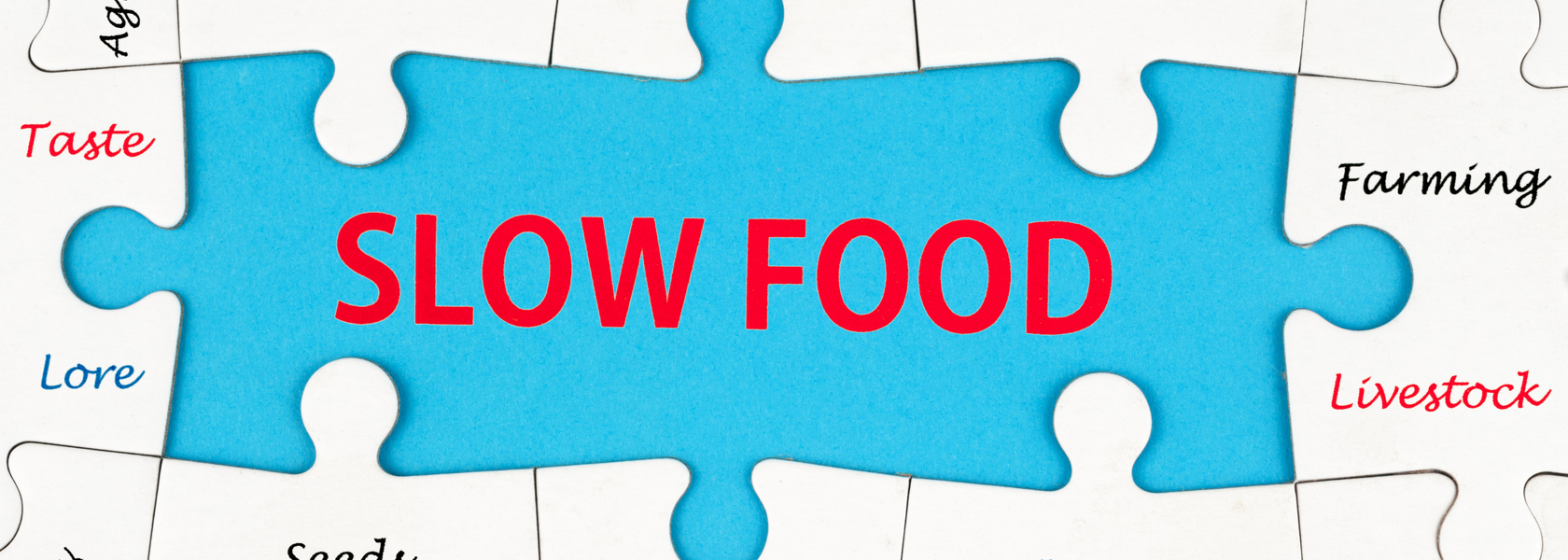There does not seem to be any other time in history where humans are not only so conscious about what we are eating, but also the choices that we make when we eat. There has been no other possible time in history that we have had this much choice about what to eat, where to eat, how to eat and how fast to eat. In the latter part of the 20th Century, we have taken fast food eating almost into an art form. As an answer perhaps to the excesses of the previous generations of the 80s and 90s, in the 00s, we have been able to take back our notion of what healthy eating is. This partnered with the fast paced way of the world, with hyper connectivity and the age of the Swipe, was just a marriage made in heaven. You could have the healthy versions of food, going back into basic, less processed ways of eating, but still within your half an hour lunch break.

But some would argue, are you really eating when you’re just wolfing down your salad?
Enter the SLOW FOOD Movement. If there is a fast food category, where convenience is king, then there is the idea of SLOW FOOD, where quality is king. In the She Knows website, Alexia Miller describes the food movement as such, “According to SlowFood.com, the slow food movement was started to counteract fast food and fast life, and educate locals about their regional fare. What began as a group of 62 eco-conscious, food-loving members in Bra, Italy has now blossomed into an international movement of more than 80,000 enthusiasts. Its mission is to protect biodiversity in the world’s food supply, educate the population about fresh taste and connect producers through slow food events.”[1]
So this reinforces the idea of slowing everything down a bit and trying to make it more enjoyable, instead of a fleeting way to gain instant gratification. A cultivating of our collective gastronomic EQ, if you will. This is seen in the three main goals this movement is trying to instill: taste education, defense of biodiversity and interaction between food producers.[2] To put it very simply, this movement is all about being more aware about the journey your food takes, from growing it, to the way it tastes because it is from a certain region of the country. It is taking the appreciation of what is on your plate to another level, slowing it down and making it more deliberate.
Philosophy behind Slow Food
In the “How Stuff Works” website, it is also says that, “The philosophy of Slow Food is “good, clean and fair food.” This means: food should pleasure the senses and be more than simply “fuel”; it should arrive on our plates in the cleanest and most environmentally responsible way possible; [and] our food producers should be compensated fairly for their work.” [3]
Every stage of your food is studied and appreciated for what it entails and how it is produced. It asks us to take more notice of what goes into our food and what it takes to make this food as good as it is, and thus making us more conscious about what we put into our bodies themselves. It is a holistic approach into eating and preparing food, instead of mindlessly microwaving our food. One of the biggest points that are made when reading up on this movement is that there is an emphasis on knowing the biodiversity of where your food comes from and how it is processed, if at all. In line with this, and because of it, we can now be better cheerleaders for our own localized community markets, and promote farmers and those who need us to buy from them the boost they need. Thus an ecosystem is created, and a community of farm to table really will exist. The knowledge of possible seed banks in your community for example, would help a long way in the production of food.
Be deliberate
Because of this mindfulness that goes now into your eating, then it is said that the food will taste that much better, and your hunger satiated better. You become part of your food’s story and journey, and thus contributing to the whole process of food from the growing of it, sourcing of it, to the purchasing and cooking of it. With Slow Food, it now becomes a more deliberate experience, rather than just a passive one.
SOURCES:
- Miller, Alexia, “What is Slow Food?” She Knows Website, https://www.sheknows.com/food-and-recipes/articles/803375/what-is-slow-food/
- Miller, Alexia, “What is Slow Food?” She Knows Website, https://www.sheknows.com/food-and-recipes/articles/803375/what-is-slow-food/
- Ronca, Debra,“Everything You Ever Wanted to Know About the Slow Food Movement”, https://recipes.howstuffworks.com/slow-food-movement.htm
- Stubblefield, Megan, MA Environmental Science and Policy, “What Is the Slow Food Movement?”, https://greenliving.lovetoknow.com/low-impact-living/what-is-slow-food-movement
- Harkness, Jane, “The “Slow Food” Movement Could Change the Way You Eat”, February 7, 2018, https://medium.com/@JaneHarkness/the-slow-food-movement-could-change-the-way-you-eat-27267adcc093
- Deram, Sophie, PhD, and Coach in Nutrition, “Slow Food”, Sophie Deram Blog, https://www.sophiederam.com/en/blog/eating-behavior/what-is-slow-food/


